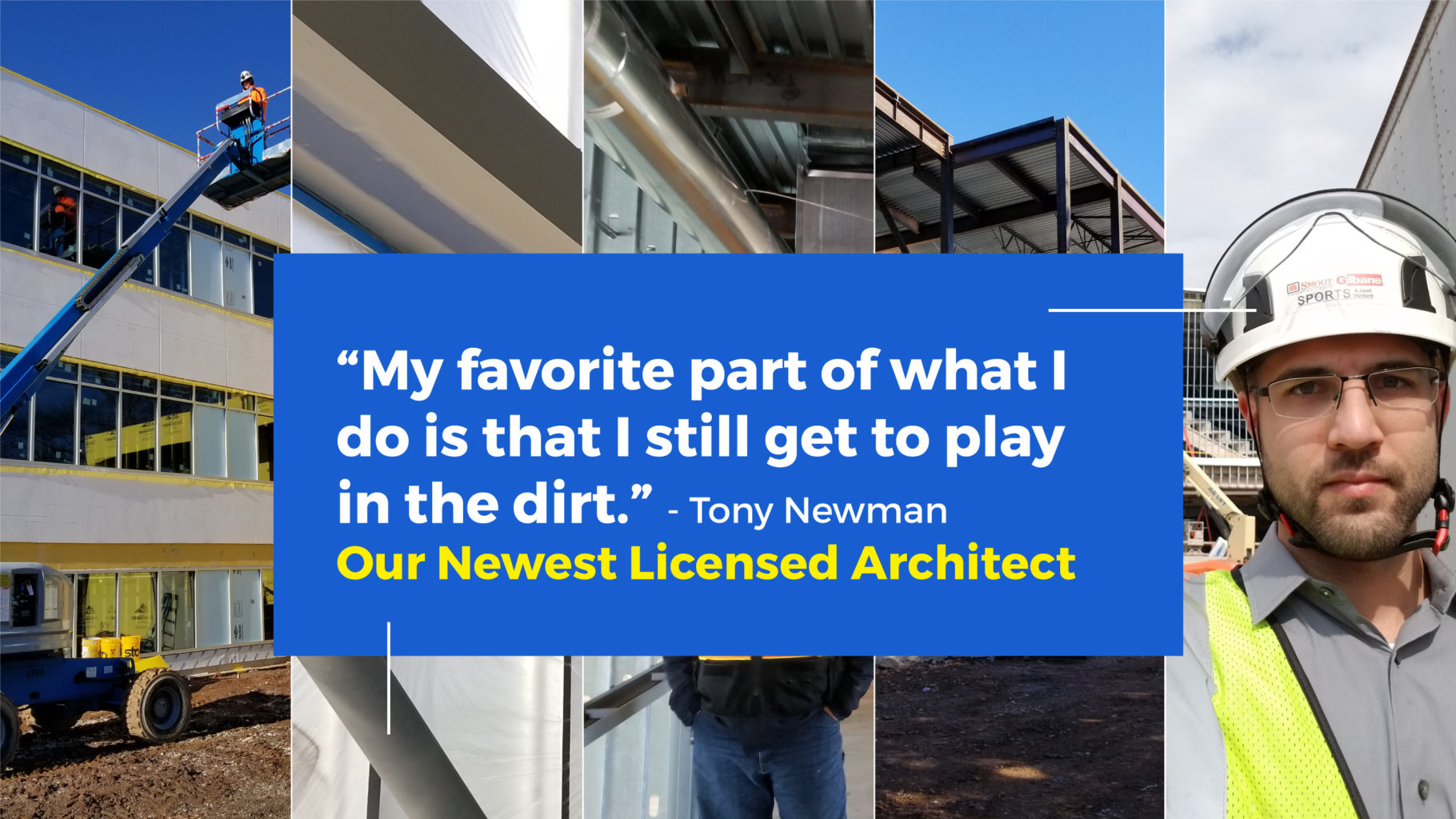
Pondering The Profession
Michael Marshall Design’s Tony Newman knew he wanted to be an architect from a very young age.
“My uncle was an architect,” Tony says. “I used to climb up and play on his drafting table. So I guess you could say I was four years old when I decided what I wanted to do.”
Tony began working with Michael Marshall Design as a Project Manager, and passed the test to achieve licensure this past March. Also a father with two young children, Tony found it productive to listen to audio resources in the car during his commute to and from work, in addition to time spent studying at night. The long hours paid off, as Tony worked with passion and determination to achieve his goal.
Licensure in the architecture profession is very important as it demonstrates an architect has the knowledge and skills to protect the health, safety and welfare of the public. In 2017, the American Institute of Architects (AIA) and the National Council of Architectural Registration Boards (NCARB) funded a study and found that 98 percent of architectural supervisors believe it is important for their team members to be licensed.
In the United States, the number of architectural candidates earning licenses is growing. As of 2017, there were over 109,000 licensed architects in the U.S. Additionally, there were 40,000 licensure candidates, the most in the past decade.
The number of women in architecture has also improved in regard to licensure candidates and certificates earned. Although women are still underrepresented in architecture, the NCARB reports that in 2016 36 percent of certified architects are women, a 2 percent increase from the prior year. On average, women also earned their licenses 10 months sooner than men.
According to NCARB, diversity among newly-licensed architects remains the same as previous years. This could be attributed to the scarcity of role models in architecture for people of color. That said, diversity in licensure candidacy is improving.
In order to continue to support the path to licensure, NCARB has begun to make licensure more attainable and straightforward. For example, the organization has created the Integrated Path to Licensure, a program designed to let students begin working toward licensure while they are still in school. This program also aims to cut down unnecessary obstacles in the licensure process. The organization believes that these actions could further increase diversity in the profession in the coming years.
The path to licensure is an accomplishment that is not easy to achieve. We here at MMD are proud to congratulate Tony on his certification.
“My favorite part of what I do,” Tony recently told us, “is that I still get to play in the dirt.”